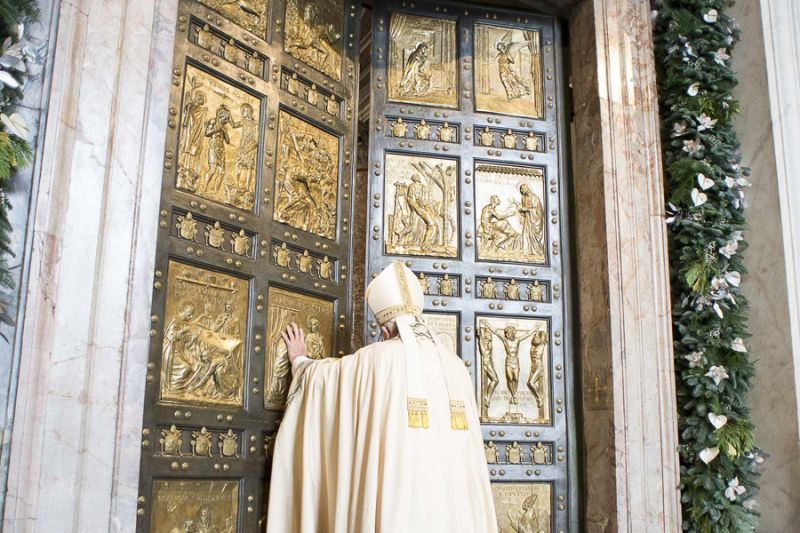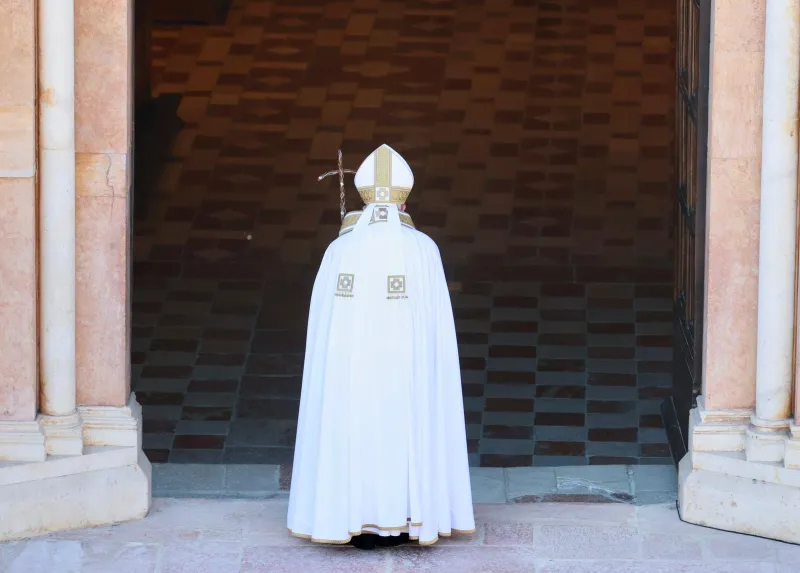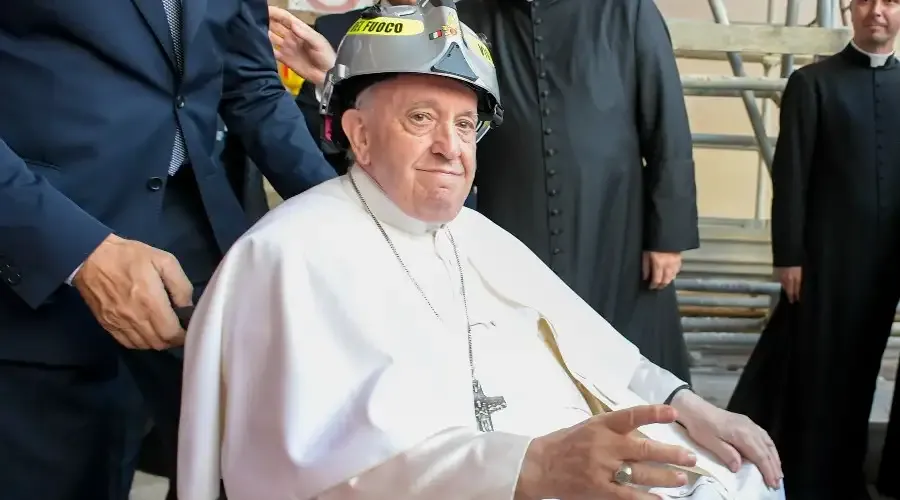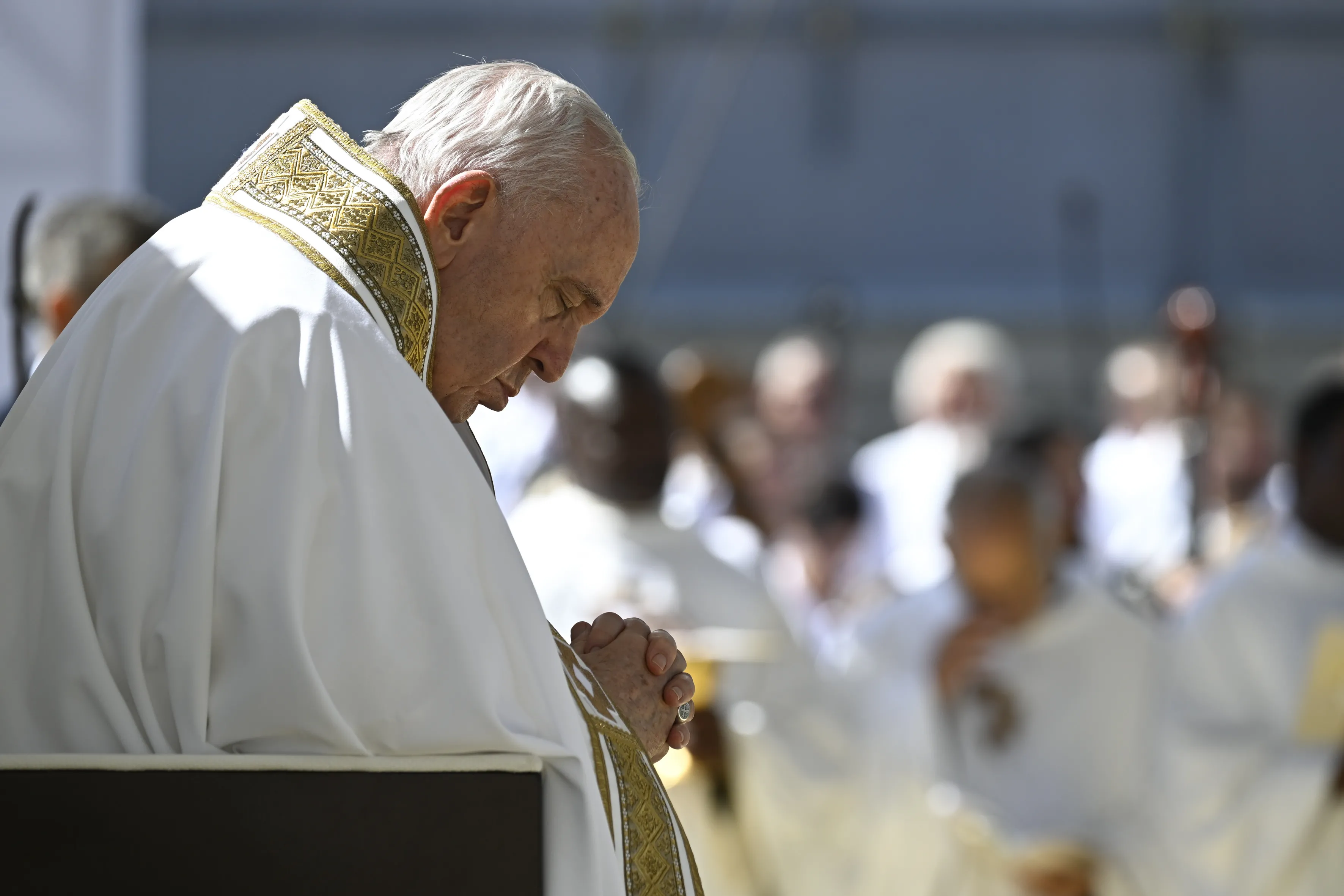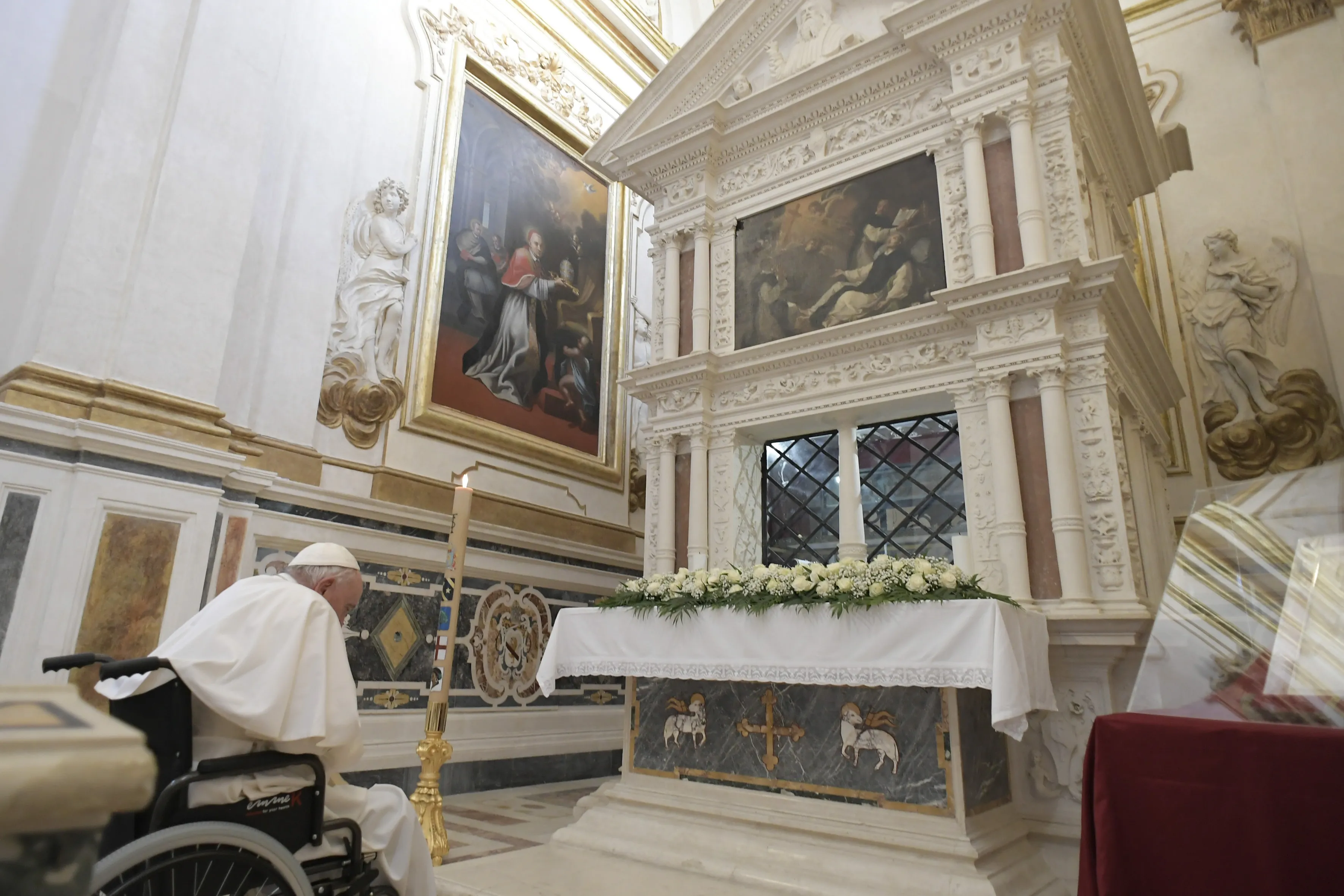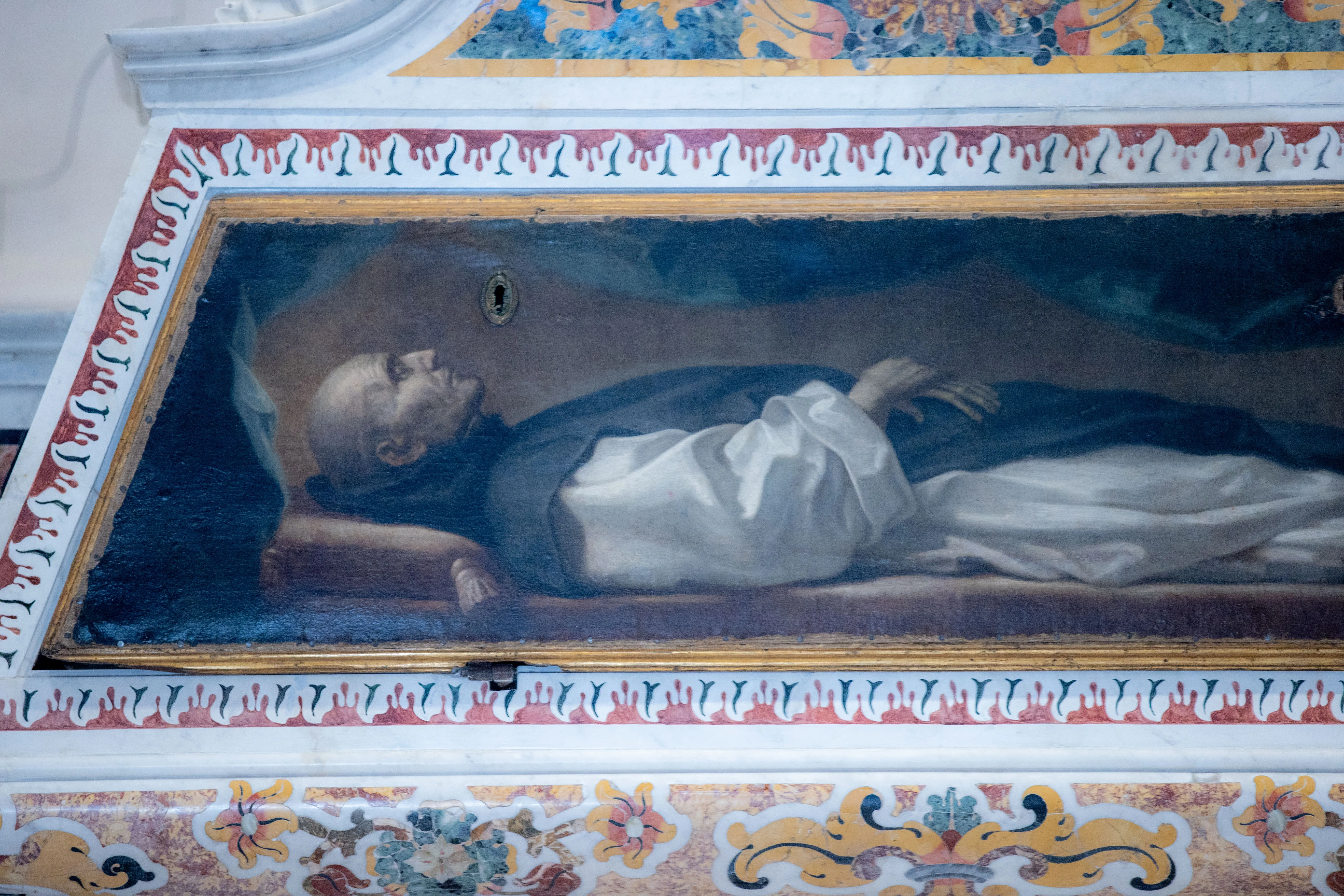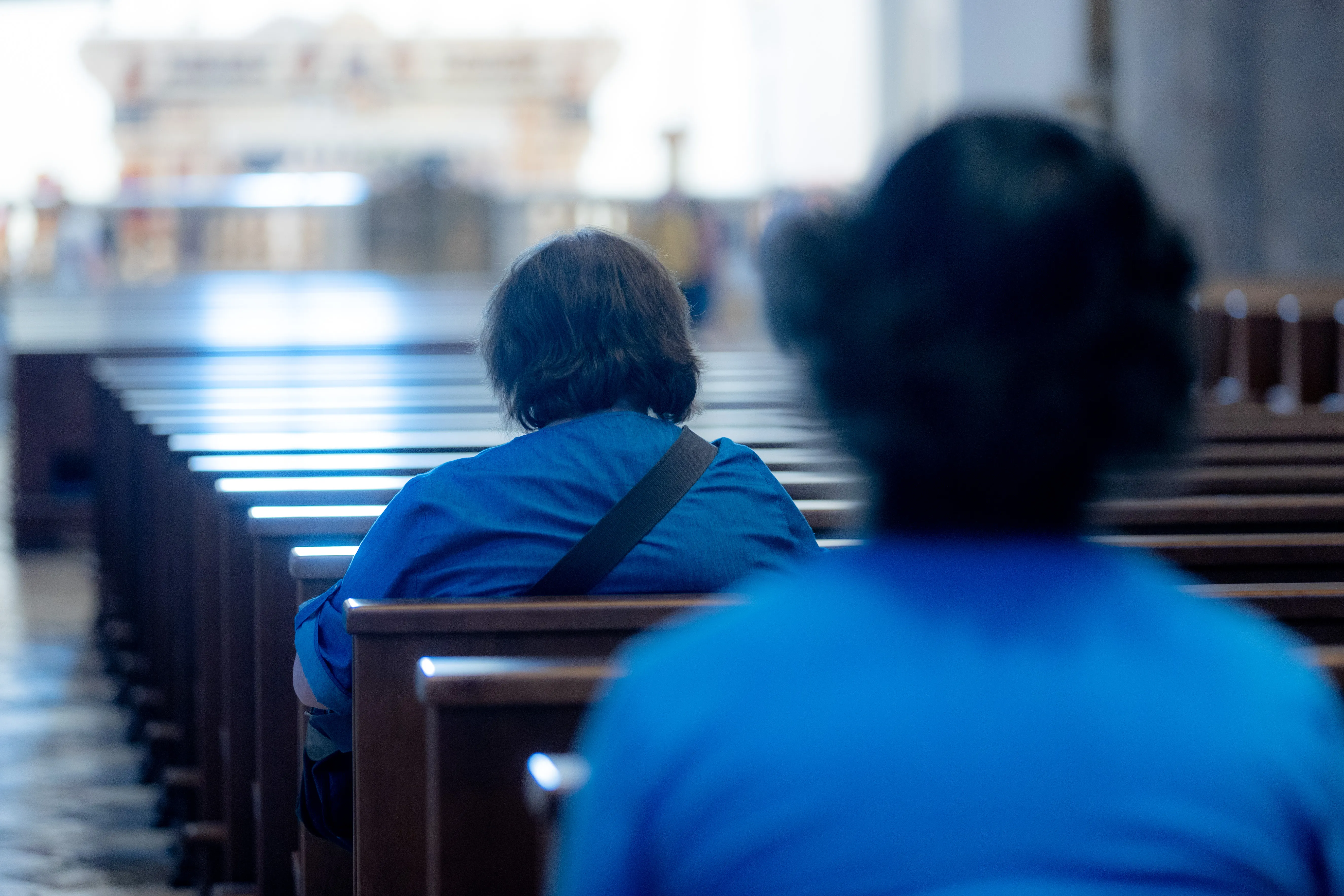
World Day of Grandparents: Vatican grants plenary indulgence for visiting the elderly
 Some 6,000 grandparents and other older people attended the papal Mass in St. Peter’s Basilica on July 23, 2023, for the World Day for Grandparents and the Elderly. / Credit: Pablo Esparza/EWTN
Some 6,000 grandparents and other older people attended the papal Mass in St. Peter’s Basilica on July 23, 2023, for the World Day for Grandparents and the Elderly. / Credit: Pablo Esparza/EWTN
Vatican City, Jul 18, 2024 / 12:15 pm (CNA).
The Vatican has granted a plenary indulgence to anyone who visits a sick, lonely, or disabled elderly person on the fourth annual World Day of Grandparents and the Elderly on July 28.
Those who are grandparents or elderly themselves can also receive a plenary indulgence, as well as anyone who participates in religious functions connected to the celebration, as long as the usual conditions are fulfilled.
The usual conditions to obtain a plenary indulgence are to be detached from all sin, to receive sacramental confession and holy Communion, and to pray for the pope’s intentions.
An indulgence is a grace granted by the Catholic Church through the merits of Jesus Christ to remove the temporal punishment due to sin. It applies to sins already forgiven and cleanses the soul as if just baptized.
Cardinal Angelo De Donatis, the head of the Apostolic Penitentiary, sent a decree July 18 granting the plenary indulgences.
A person who cannot leave his or her home due to sickness, infirmity, or another serious reason can also obtain the plenary indulgence if they “unite themselves spiritually to the sacred functions” of the day, “offering to the merciful God the prayers, pains, or sufferings of their lives, especially during the various celebrations which will be broadcast through the media,” De Donatis decreed.
The major penitentiary also asked priests to make themselves available to hear confessions “in a ready and generous spirit” so that Catholics may more easily have “the opportunity to attain divine grace through the power of the keys of the Church.”
World Day of Grandparents and the Elderly
The World Day of Grandparents and the Elderly, initiated by Pope Francis in 2021, is held on the fourth Sunday of July, which falls near the July 26 feast of Sts. Joachim and Anne, the grandparents of Jesus.
In 2024, the day will be celebrated on July 28 with the theme: “Do Not Cast Me Off in My Old Age” — taken from Psalm 71.
The Vatican announced the theme in February, saying it was Pope Francis’ desire “to call attention to the fact that, sadly, loneliness is the bitter lot in life of many elderly people, so often the victims of the throwaway culture.”
In 2023, Pope Francis marked the day with an intergenerational Mass in St. Peter’s Basilica, affirming in his homily that old age is a “blessed time.”
“How much we need a new bond between young and old,” the pope said on July 23 last year, “so that the sap of those who have a long experience of life behind them will nourish the shoots of hope of those who are growing. In this fruitful exchange we can learn the beauty of life, build a fraternal society, and in the Church, be enabled to encounter one another and dialogue between tradition and the newness of the Spirit.”
Conditions to obtain a plenary indulgence
In order to obtain a plenary indulgence, the following conditions must be fulfilled:
1. Detachment from all sin, even venial.
2. Sacramental confession, holy Communion, and prayer for the intentions of the pope. These three conditions can be fulfilled a few days before or after performing the works to gain the indulgence, but it is appropriate that Communion and the prayer take place on the same day that the work is completed.
A single sacramental confession is sufficient for several plenary indulgences, but frequent sacramental confession is encouraged in order to obtain the grace of deeper conversion and purity of heart.
For each plenary indulgence that is sought, however, a separate holy Communion and a separate prayer for the intentions of the Holy Father are required.
The prayer for the intentions of the Holy Father is left up to the choice of the individual, but an Our Father and Hail Mary are suggested.


